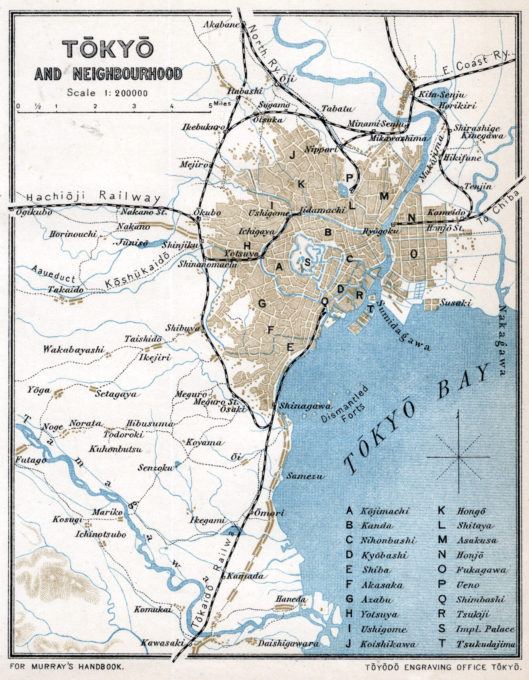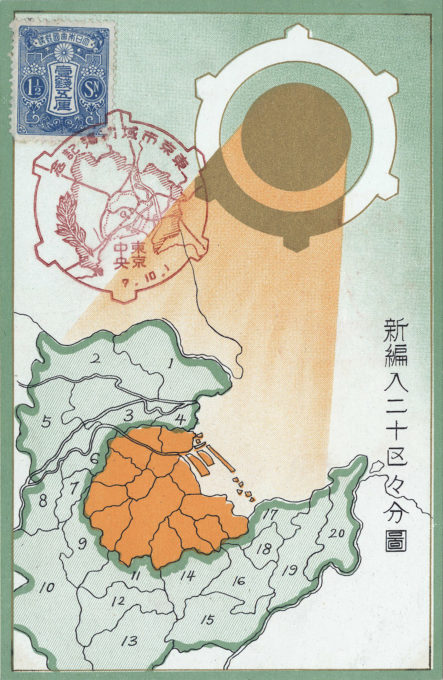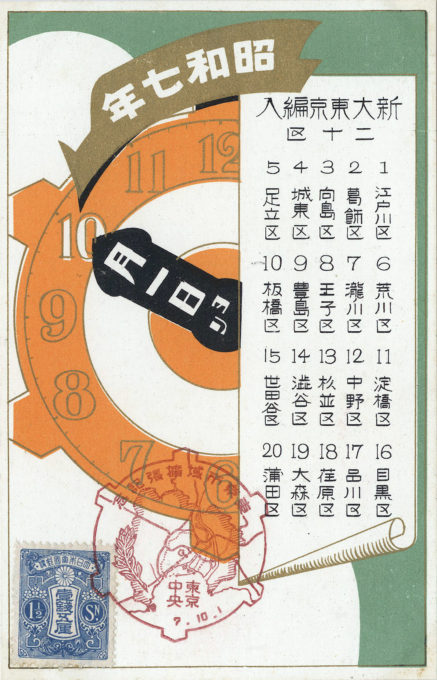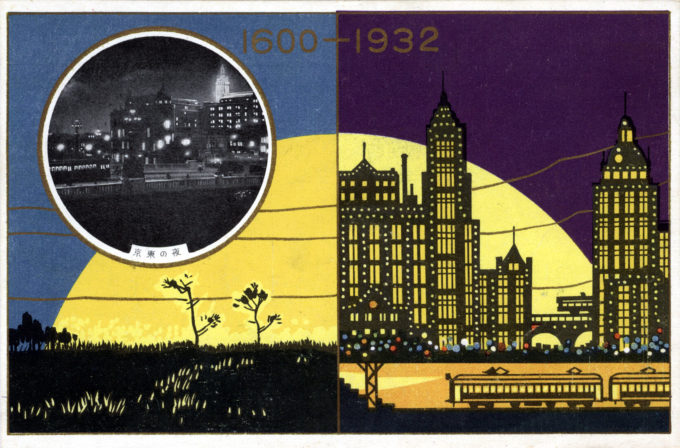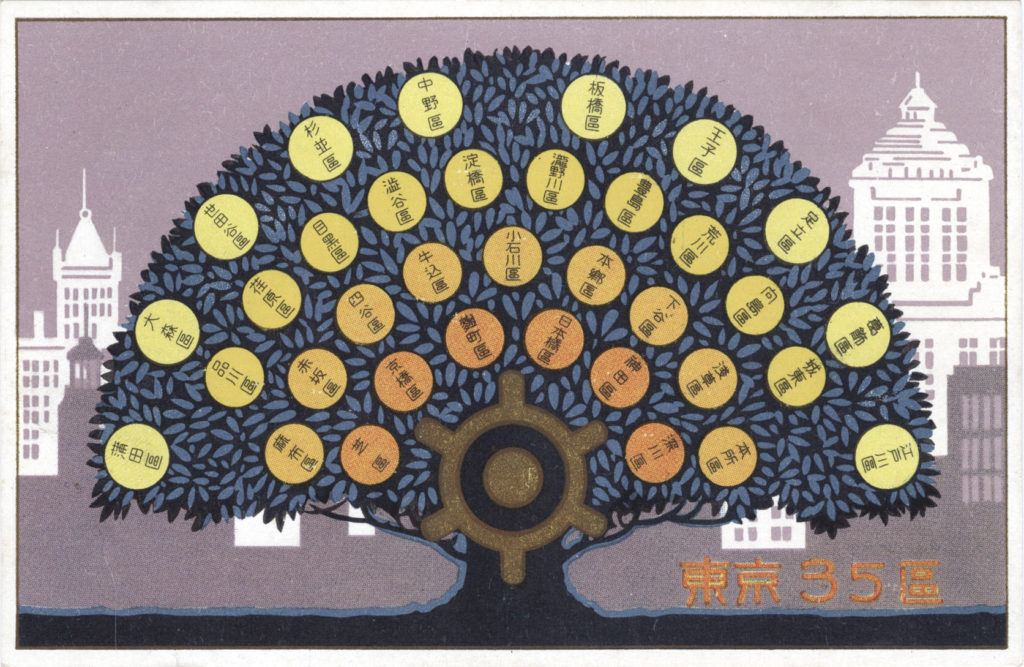
Tokyo grows to 35 wards, 1932. The city’s original 15 wards (1889-1932) comprise the bottom two rows. Upon absorbing several outlying districts in 1932, Tokyo City would be comprised of an additional 20 wards, including Setagaya, Nakano, Meguro, Shinagawa, Edogawa, Yodobashi (Shinjuku) and Shibuya.
See also:
Tokyo Self-government Commemoration, 1919
Tokyo City Hall, c. 1910-1930
“Tokyo City’s original 15 wards were first established in 1878, under the Law for Reorganization of Counties, Wards, Towns, and Villages act. In 1888, the Meiji government created the legal framework for the current system of cities (shi) that were granted some basic local autonomy rights – with some similarities to Prussia’s system of local self-government as Meiji government advisor Albert Mosse heavily influenced the organization of local government. The Tokyo city council/assembly (Tōkyō-shikai) was first elected in May 1889.
Tokyo, 1907. The city limits are shaded brown. Listed are the original 15 wards c. 1878 (labeled A-O) plus several notable landmarks (labeled P-T). The expansion of Tokyo in 1932 into “Greater Tokyo” would incorporate all of the area west (to the left) of the original city limits, and more, well outside the then-uncompleted Yamanote “circle” railway.
“The original wards making up Tokyo City from 1878-1932 numbered fifteen: Akasaka, Asakusa, Azabu, Fukagawa, Hongo, Honjo, Kanda, Koishikawa, Kojimachi, Kyobashi, Nihonbashi, Shiba, Shitaya, Ushigome and Yotsuya. On October 1, 1932, large areas from five surrounding suburban and rural districts were absorbed and merged into Tokyo City, organized into 20 new wards, bringing the total to 35. The expanded city became referred to as ‘Greater Tokyo’ (大東京 Dai-Tōkyō). Among the new city wards created in 1932 were Shinagawa, Meguro, Shibuya, Setagaya, Nakano, Mukojima and Yodobashi (later Shinjuku).
“In 1943, the city was abolished and merged with Tokyo Prefecture to form the Tokyo Metropolitan Government. This remained in place until a complete reorganization was undertaken in 1947 during the Occupation, resulting in the present Tokyo-to of 23 wards.”
– Wikipedia
- The creation of “Greater Tokyo,” 1932. Tokyo’s original 15 “ku” (wards) are colored light-brown. The 20 new “ku” are highlighted in green and numbered (corresponding to the postcard chart to the right).
- The creation of “Greater Tokyo,” 1932. The list of the 20 new “ku” (wards), pointing to the expansion date: Oct. 1, 1932. New areas incorporated into Tokyo included Shinagawa, Shibuya, Nakano, and Yodobashi (Shinjuku).
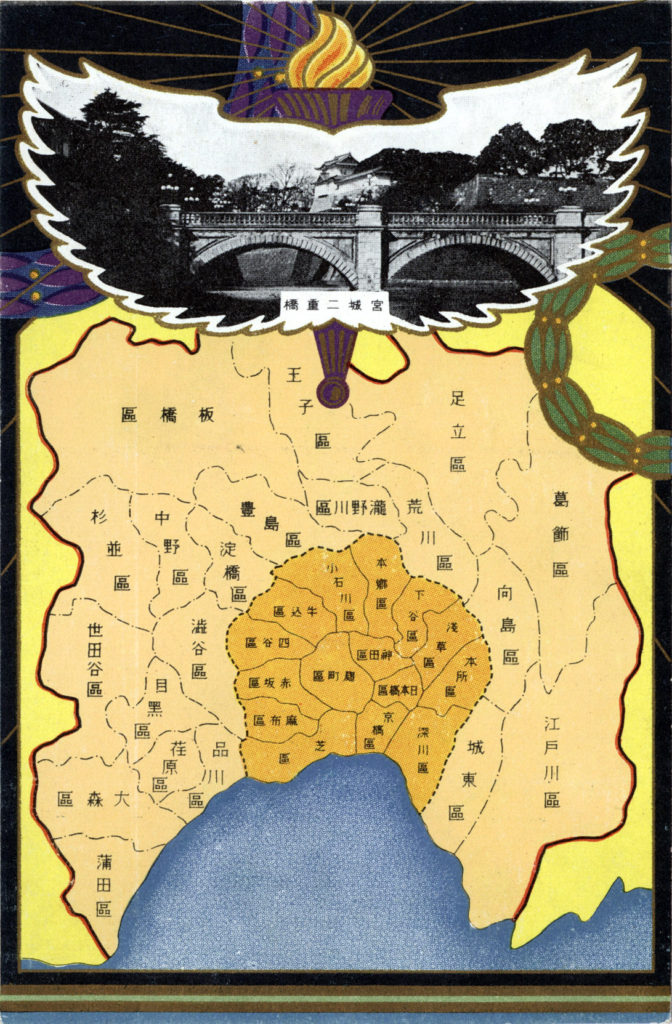
Tokyo City’s original 15 wards are highlighted at center. After 1932, the city’s boundaries greatly expanded to incorporate surrounding suburban and outlying rural areas, putting an additional 20 wards into a new prefectural government.
“Tokyo-to, the capital of the Japanese Empire, is a great diversified metropolitan center and, together with its satellite cities on Tokyo-wan, it is one of the largest and most populous urban areas in the world.
“The 1940 boundaries established in October 1932 included 35 wards (ku) and enclosed an area referred to as ‘Greater Tokyo’. In the area of the 15 wards, which before 1932 formed the inner city, there was a population in 1940 of 2,333,601. The 20 wards added in 1932 formed the outer city.
“In 1943 Tokyo-shi [city] became, in area and government, identical with Tokyo-fu (urban prefecture), the resulting unit was called Tokyo-to and had a population of 7,354,971. Much of the area absorbed in this latest expansion is essentially rural in character …”
– Civil Affairs Handbook, Japan: Prefectural Studies, Tokyo-to, [U.S.] War Department, September 1945
- Illustrated aeroplane overflying Nihonbashi Bridge & the Nihonbashi financial and commercial district.
- Inset photo is of the Mitsukoshi department store tower at Nihonbashi, illuminated at night.
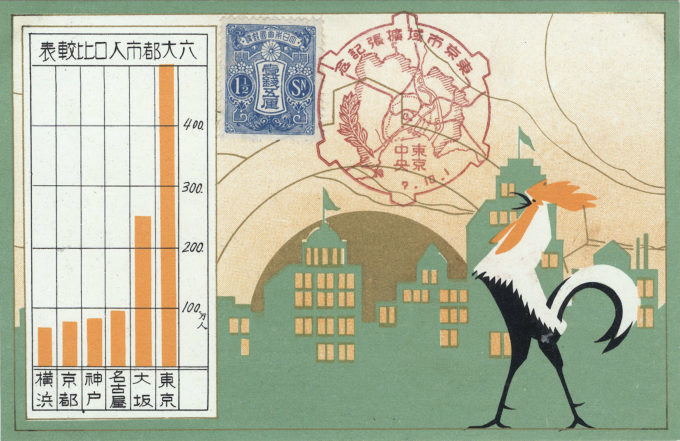
The creation of “Greater Tokyo,” 1932. The comparative populations of Tokyo, after the expansion, with Osaka, Nagoya, Kobe, Kyoto, and Yokohama. In the 1930 census, Osaka had been the larger city – 2,450,000 people. After the creation of “Greater Tokyo,” the capital’s population was estimated at 5,000,000 people (6.7 million in the 1940 census).
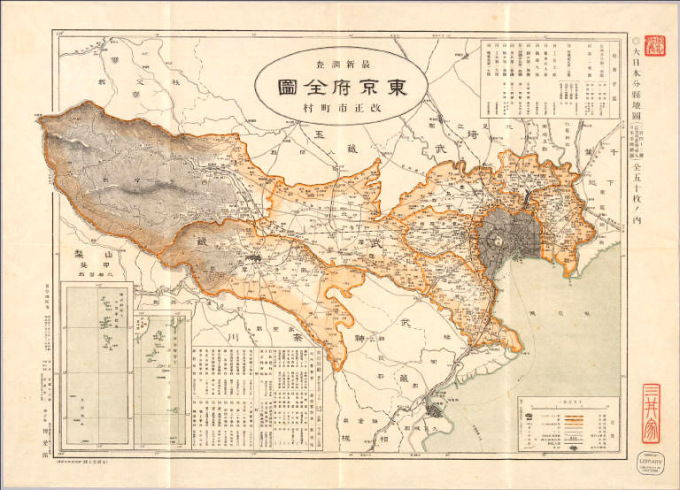
A further expansion of Tokyo’s metropolitan boundaries happened in 1943 with the merger of Greater Tokyo (urban districts) with that of Tokyo Prefecture (rural districts) into a new Tokyo Metropolis (Tokyo-to). Tokyo’s original 15 wards are shaded in grey. The new metropolis extends now from Tokyo Bay westward to the foothills of the Japan Alps.


